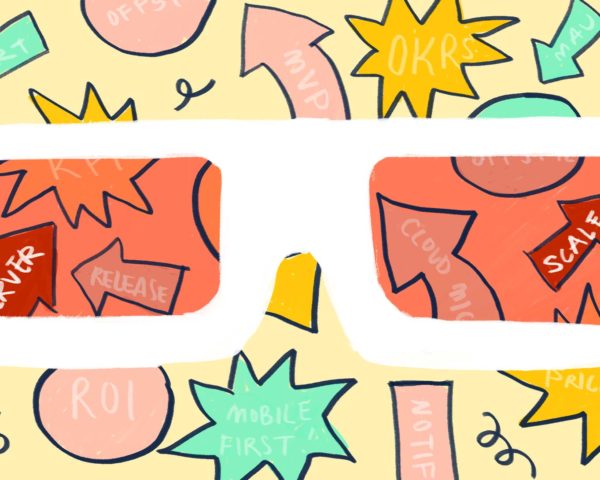One winter, about a decade ago, I decided to spend a few months living in San Diego, walking distance from the beach. I found what I thought was a sweet deal: a room for rent in a spacious, attractive apartment where my roommate would only be living there half-time (his work required him to travel two weeks per month). Jackpot.
I prepaid for the accommodation, drove from Denver to California, and settled in, only to find this was…what’s the opposite of a jackpot?
It was true my roommate only lived there half-time, but when he was there, he was difficult. He’d leave the lights on all the time and blame me for the high electric bill. He called me a spinster for daring to be unmarried in my late twenties. He’d stand over me while I cooked, critiquing my food.
So, I had a dilemma: stay or go. According to economists, most people would stay because of what the field calls the sunk cost fallacy. But, according to research, the better strategy is to go. Which is exactly what I did.
My decision was a purely personal one, but this same dilemma comes up in business all the time. And the same pitfalls exist.
What’s the sunk cost fallacy?
If you’ve ever watched through to the end of a bad movie because you already paid to rent it, overeaten at the buffet to “get your money’s worth,” or killed your own productivity by using a tech tool that doesn’t actually work for your business because you’ve invested so much time and money it, my condolences – you’ve fallen victim to the sunk cost fallacy.
In a nutshell, the fallacy is this:
Once you’ve invested in something, you’re likely to follow through on it – even if following through is a bad decision.
The term “sunk cost” is about money, time, or energy you’ve already spent and can’t get back. You prepaid the rent, put five years into the relationship, bought the servers, moved your users onto that platform, etc. You aren’t getting the money or time back from any of those investments, and it feels like a waste.
The fallacy here is thinking those costs matter to your decision-making process. It’s the tendency to factor them in when choosing what to do. For example, if a new tool hits the market and it’ll save your tech teams 20 percent on admin time, but you just bought another tool last month…your tendency may be to factor in the cost and effort it took to acquire the other tool when making a decision about whether to move to the new tool.
Economists say this is pretty illogical. If staying with the old tool costs you 20 percent more admin time, the fact that you just moved to the old tool shouldn’t be a factor in your decision-making process. If I’m miserable in my roommate situation, the money I already spent on the apartment shouldn’t be a factor in whether I choose to stay or go (though the money I’ll spend to move out will be).
How to avoid the sunk cost fallacy (it’s harder than it seems)
When we lay it out like that, ignoring the investments you’ve already made seems like the smart decision – and it is. But the truth is that most people – even extremely logical people – fall prey to this type of bias when faced with it in real-life situations.
One study published in 2018 offered participants a way to win some money. They were given two options – one had sunk costs and the other was very obviously the better option. Even though the first option had logically worse odds, most participants chose it.
The researchers believe this is because the first option was more psychologically satisfying. What this research tells me is that if we want to make good decisions, with better odds of success, we have to pay attention. Our gut reaction to buy into the sunk cost fallacy won’t cut it when we’re talking about high-stakes business and life decisions.
Another study asked participants to imagine a scenario where they’d accidentally purchased two nonrefundable vacations. The first was a vacation they’d enjoy more but had paid less for. The second was a very pricey vacation they’d enjoy less. More than half of the people chose the pricey, less-fun vacation – because their enjoyment mattered less than their loss aversion.
Still another study found that when someone else pays those sunk costs, we’re even more likely to make illogical decisions to honor them. If we bought a concert ticket and end up feeling sick on the day of the show, we’re still fairly likely to go because of sunk costs. If a friend or our boss or even a stranger on the street bought us the ticket, our odds of going increase.
The bottom line: We’re wired as illogical decision-makers thanks to the sunk cost fallacy. If we want to make clear-headed business (and life) decisions, we need to do things a bit differently.
Three ways to avoid the sunk-cost trap
So, how do we do things differently? How can we get away from the psychological trap of sunk costs? There’s no foolproof answer, but here are three tactics that can nudge us in the right direction.
1. Leave the past out of your pro/con lists
Decision-making should be based on present and future costs and benefits – not past ones. When you’re framing a decision, look forward. Will leaving that bad roommate situation make your life better? Will pivoting on a project increase customer satisfaction? Will a move to the cloud help you scale your business and meet high-level goals?
Those forward-looking questions are where you should focus. Ignore questions about the cost – in money or time – of past tools and recent migrations.
2. Reframe how you think about past costs
Instead of thinking of past costs as a potential loss today, think of them as something that got you to this point.
Those servers and load balancers made your business possible before. It’s okay to feel grateful for them and move on instead of sticking with an outdated model that’s now costing you time and money.
That tool you’re thinking of ditching? It taught you what you didn’t want or helped your tech team hone their migration skills or supported your teams until you could find something better. It’s okay to send it a little thanks and move on to the better tool.
Same thing with personal life sunk costs. That relationship, that move, that creative project that isn’t quite working…they all taught you things. They all moved you forward. You can thank them and move on.
In psychology, this practice is known as cognitive reframing, and it may help ease the kind of psychological distress that may contribute to making illogical sunk costs decisions.
3. Use technology to make decisions
We are so attached to our sunk costs. None of us is immune. I opened with a story about a bad roommate situation, which I ultimately left (me: 1, sunk cost fallacy: 0), but there are plenty of times when I’ve given in. I finish books I hate because someone gave them to me. I eat sub-par leftovers because goshdarnit, I paid good money for that meal.
In other words, I’m susceptible to the fallacy. And so are people trained in economics, according to this research. So, knowing about the fallacy isn’t the same as kicking it to the curb.
Which is why one of the best strategies is to use technology to make decisions for you. Online cost calculators help you look forward instead of back, for example, and intelligent management dashboards often use machine learning and predictive analytics to help leaders make forward-thinking decisions.
Your tech tool won’t be swayed by the psychological satisfaction of sticking with our sunk costs. Especially if you don’t have a place in the tool to even factor them in.
Wave goodbye to sunk costs
If you invested a month and $75,000 in a feasibility study for a new product feature and found that users don’t want it, that $75,000 and internal time should not be factors in your decision to tank the project, pivot, or continue with launch.
If you’ve already paid out the nose for servers and you realize cloud is a better fit for your business, the sunk costs of those servers should not be a factor in deciding whether or not to move to cloud.
And if you moved to the beach for the winter and your roommate is the worst, that prepaid rent shouldn’t be a factor in whether you buy a plane ticket to Italy and spend the rest of the winter overlooking the Tuscan hills where no one calls you a spinster (at least to your face).
Considering a move to cloud? Our cloud calculator is a great place to start getting a sense of real costs (not sunk ones).



